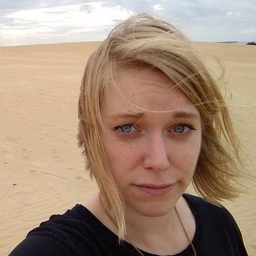
Hannah Waters
Senior Editor, Biology at Quanta Magazine
journalist + biologist + birder ~ biology editor @quantamagazine ~ former climate editor at Audubon mag, forever @thebirdunion ~ views my own. DM for email addy
Articles
-
1 month ago |
bournemouthecho.co.uk | Hannah Waters
4 1/1 BLANDFORD and Sturminster Ladies faced Southampton University Ladies 3's in the Hampshire Senior Ladies Vase and it was not a cup final to miss. Nerves from both sides culminated in a neck and neck first half; Blandford won four shorts, each saved convincingly by Southampton's keeper. Southampton earned two shorts themselves, with Zena Parry solidly saving both. However, the pendulum swung in the second half. Southampton did not have a single shot at goal.
-
Mar 25, 2025 |
audubon.org | Hannah Waters
Audubon MagazineSummer 2019Climate A new ranching generation is taking cues from historical bison herds to help prairies, wildlife, and their businesses survive the next century. By Hannah Waters Senior Editor, Audubon magazine Grasslands are tough. They can survive extremes, from heatwaves and cold snaps to torrential downpours and droughts. They require turbulence.
-
Jan 21, 2025 |
quantamagazine.org | Yasemin Saplakoglu |Veronique Greenwood |Molly Herring |Hannah Waters
Introduction Imagine you’re on a first date, sipping a martini at a bar. You eat an olive and patiently listen to your date tell you about his job at a bank. Your brain is processing this scene, in part, by breaking it down into concepts. Bar. Date. Martini. Olive. Bank. Deep in your brain, neurons known as concept cells are firing. You might have concept cells that fire for martinis but not for olives. Or ones that fire for bars — perhaps even that specific bar, if you’ve been there before.
-
Jan 6, 2025 |
quantamagazine.org | Veronique Greenwood |Molly Herring |Hannah Waters |Steven Strogatz
Introduction Prochlorococcus bacteria are so small that you’d have to line up around a thousand of them to match the thickness of a human thumbnail. The ocean seethes with them: The microbes are likely the most abundant photosynthetic organism on the planet, and they create a significant portion — 10% to 20% — of the atmosphere’s oxygen. That means that life on Earth depends on the roughly 3 octillion (or 3 × 1027) tiny individual cells toiling away.
-
Sep 26, 2024 |
smithsonianmag.com | Hannah Waters |Emily Frost |Joe Spring
By the time the Schmidt Ocean Institute’s research vessel Falkor (too) finished an expedition off the coast of Chile earlier this year, its scientists had amassed a slew of amazing deep-sea discoveries. During the cruise, researchers sent an underwater robot capable of descending more than 14,000 feet below the surface to collect video footage and specimens from seamounts. After analyzing what they had gathered, the international team revealed they had likely found more than 100 new species.
Try JournoFinder For Free
Search and contact over 1M+ journalist profiles, browse 100M+ articles, and unlock powerful PR tools.
Start Your 7-Day Free Trial →X (formerly Twitter)
- Followers
- 9K
- Tweets
- 10K
- DMs Open
- Yes

RT @MitoPsychoBio: How much energy does it cost to think? https://t.co/pSqU1OwfcY

RT @QuantaMagazine: Recent research shows that inactivity consumes nearly as much brain energy as effortful, goal-directed cognitive tasks.…

RT @AsburyParkPress: Florida's white ibis are thriving in NJ and nesting in Ocean County for 1st time https://t.co/s8JYh9663T